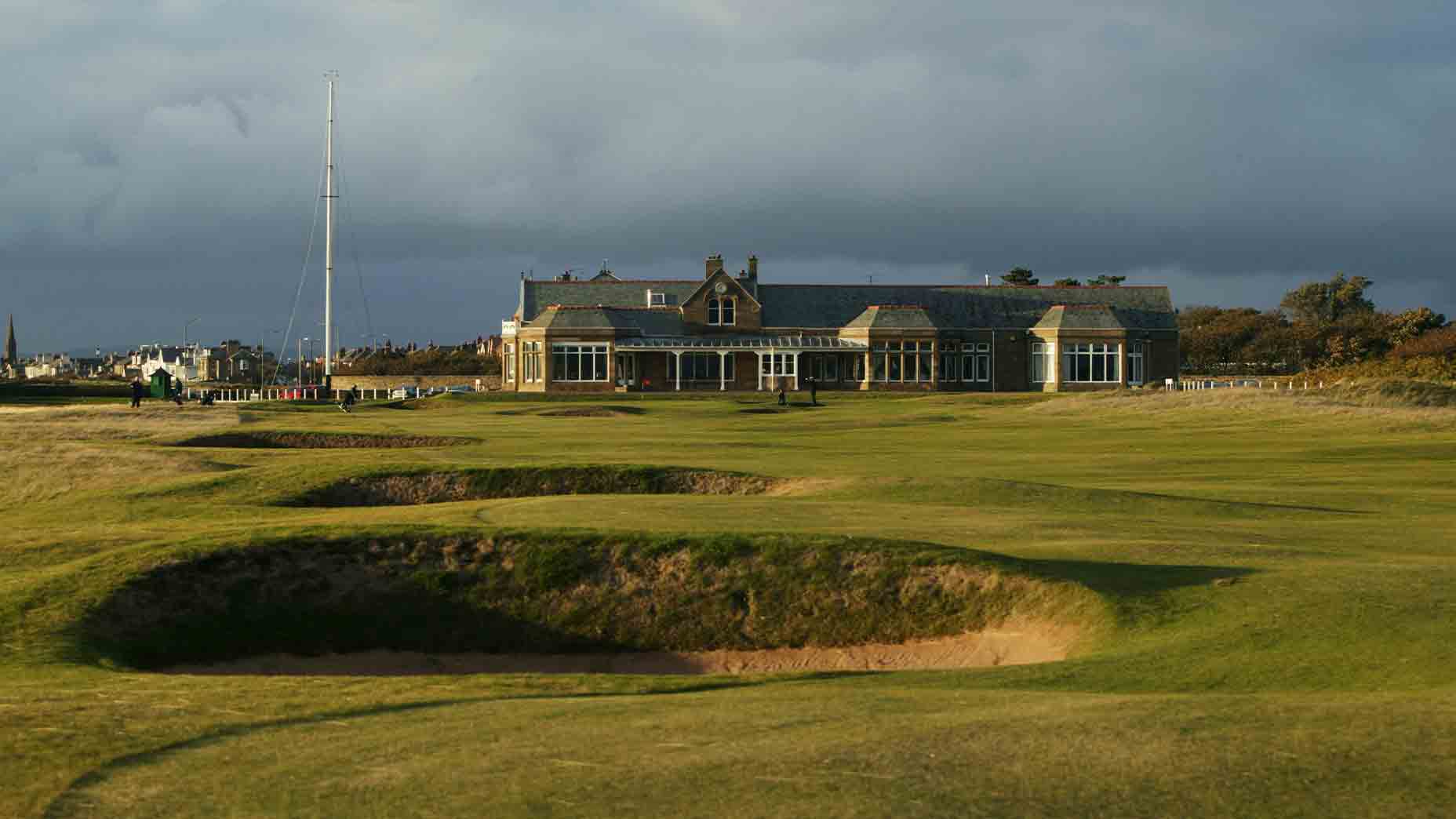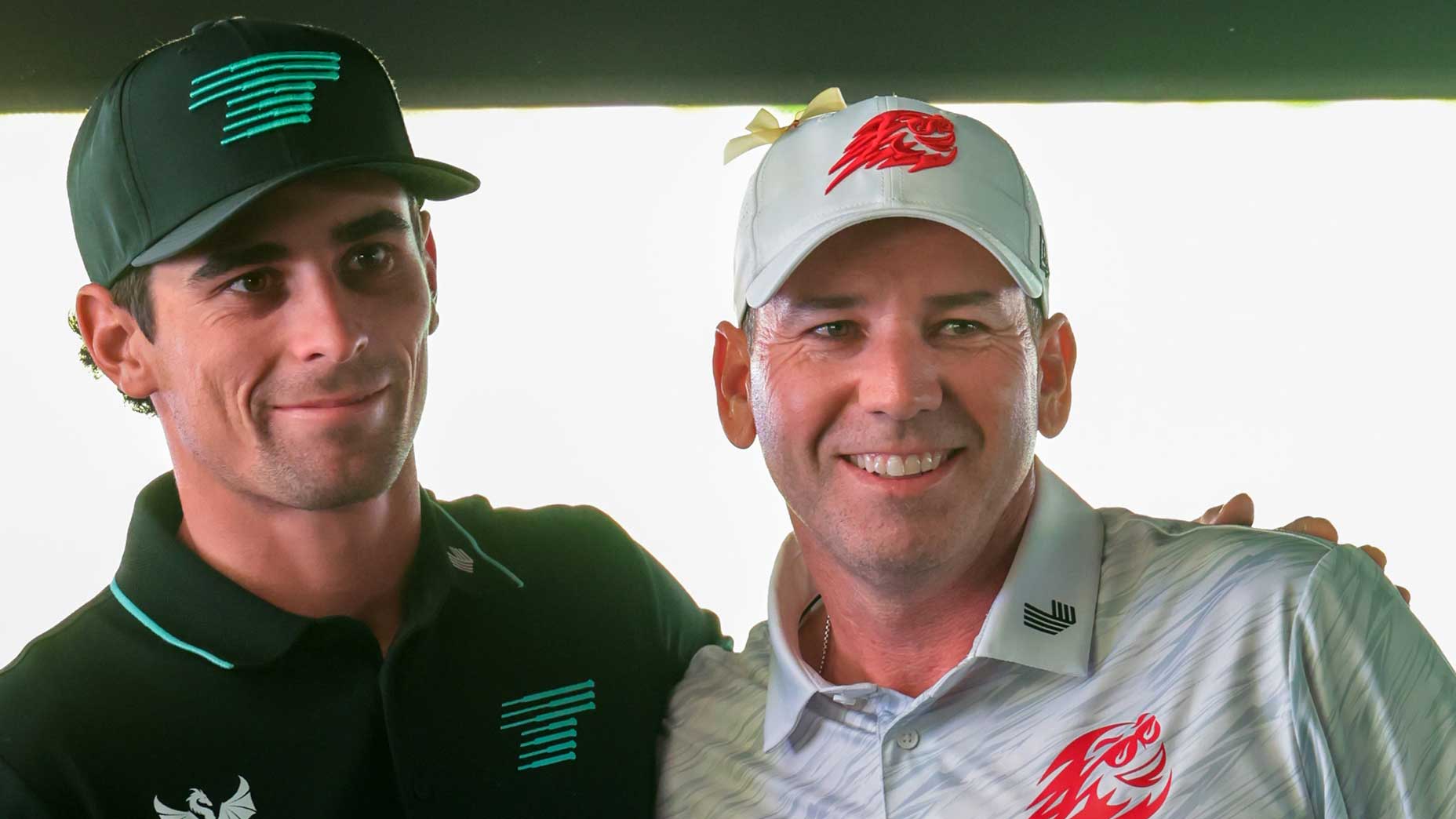Bunkers at The Open are different this year — here’s why it matters
- Share on Facebook
- Share on Twitter
- Share by Email

Bryson DeChambeau plays from a bunker at Royal Troon.
Getty Images
TROON, Scotland — When PGA Tour pros load up their bags every July to fly across the Atlantic Ocean, they do so with a good bit of acceptance. They’ll be playing a different style of golf in the near-term — links golf — full of lies and bounces and winds they haven’t seen since, well, this time last year.
“There’s a certain attitude that you need to have to play at a high level,” Xander Schauffele said Tuesday at The Open. “That comes with playing links golf. That’s sort of the first thing I learned when I was here.”
Here, in the land of the unpredictable.
What makes Royal Troon distinctive? Course experts weigh inBy: GOLF’s Course Ratings Panel
It was attitude, of the communal variety, that rang out the loudest last year during the Open at Royal Liverpool. Bad attitude. Players complained about setup of the bunkers at Hoylake so much that the R&A had to change its course setup intentions mid-tournament, a stunning alteration of the test. The R&A didn’t do it quietly, either. They had to announce it via a press release Friday morning. The players had won. But what was the big deal?
The bunkers at Royal Liverpool were flattened to make them more penal. Bunkers in this part of the world often feature revetted faces, with layers of sod piled up to create a barrier from anyone who had hit into the sand. When the edge of the sand drops down a revet and gets flattened, it’s more likely any shots that enter the bunker will come to stop much closer to the face, thereby making it more likely that players have to play sideways or even backward before proceeding to the hole.
It marked a fascinating point in pro golf course setup. There’s a difference between really flat and too flat. Between really deep and too deep. Between really penal and too penal. And pros are ready to call it out when they see it. Which brings us to this week, where the bunkers will play an important role once again. Can the R&A get them right from the jump?
“The bunkers here … They’re hazards,” R&A CEO Martin Slumbers said Wednesday morning. ”They’re deep. They’ve got big faces, and they’re designed to stay out of. We’ve been looking very carefully at the sand, and I think some of the players have commented how we’ve pushed them up a little bit to give them a slight chance to be able to get out.”
Key word: slight. There are only 96 stern bunkers at Royal Troon — their grassy faces get trimmed by hedge clippers — but they are present from the start. There are 10 bunkers on the 1st hole alone. Then another 11 on the 2nd. There are five bunkers surrounding the tiniest hole on The Open rota — the 123-yard Postage Stamp 8th — and the fiercest of those bunkers is appropriately nicknamed Coffin. That it is shaped like a burial rectangle might be coincidence, and it might be the entire point.
When Johnson Wagner, Golf Channel’s gonzo golfer, visited the Coffin Bunker Tuesday, Wyndham Clark grabbed the microphone from him and acted like an on-course reporter. When Wagner splashed out a bit too far, rolling off the other side — into yet another bunker — Clark’s analysis was biting.
“He got it out. ‘Bout to make triple,” Clark said. “Could be worse.”
.@Wyndham_Clark announcing while @Johnson_Wagner tries to hit a ball out of the "coffin bunker" is pure COMEDY.
— Golf Channel (@GolfChannel) July 15, 2024pic.twitter.com/g1BZjqz3D2
That Coffin trap has everyone’s attention this week. Speaking to the press Tuesday morning, Scottie Scheffler highlighted it as one where, if you find your ball in there, it’s probably with a plugged lie. That thought explains a bit about the bunkers at Royal Troon. They’ve got no shortage of sand. And splashing into them with a wedge shot is very different than with a 3-wood or driver.
The bunkers at Royal Troon are not the hard-packed, thinly covered bunkers of Australia. They’re not the pearly-white sand shipped into Augusta National. They’re not the kind you might see in middle America, so easy to play from that Tour pros actually cheer for their ball to go into a bunker rather than avoid it. This week, there’s an abundance of sand. And whatever gets splashed out of them gets brushed back into them via brooms from the maintenance staff. Without a ton of rain in the forecast, it’ll be smooth sand, too. The kind players will need to thump through. Listen to the sound of Tiger Woods sand work Wednesday morning.
Perfecting the art of the pot bunker.@TigerWoods | @TheOpen pic.twitter.com/sXNXj21voW
— PGA TOUR (@PGATOUR) July 17, 2024
“These pots [bunkers] are unlike any bunkers we see at home,” Woods said Tuesday. ”These are very — they’re penalty areas. You go in them, you’re probably going sideways or backwards or somewhere not very far. So it’s imperative to stay out of them.”
With more sand, and when raked the right way — which leaves a bit of an uphill slope to the face of the bunker — balls seem to be settling in the most tempestuous spots: not up against the bunker face, but just removed from it. Play sideways if you’d like, but play forward at your own peril. Take a quart of sand with you as you swing — just don’t complain about it. Because the head of the R&A won’t be sharing much for sympathy.
“As you know,” Slumbers said with a smile, “links golf is very simple — stay out of the bunkers.”
Latest In News

Sean Zak
Golf.com Editor
Sean Zak is a writer at GOLF Magazine and just published his first book, which follows his travels in Scotland during the most pivotal summer in the game’s history.










